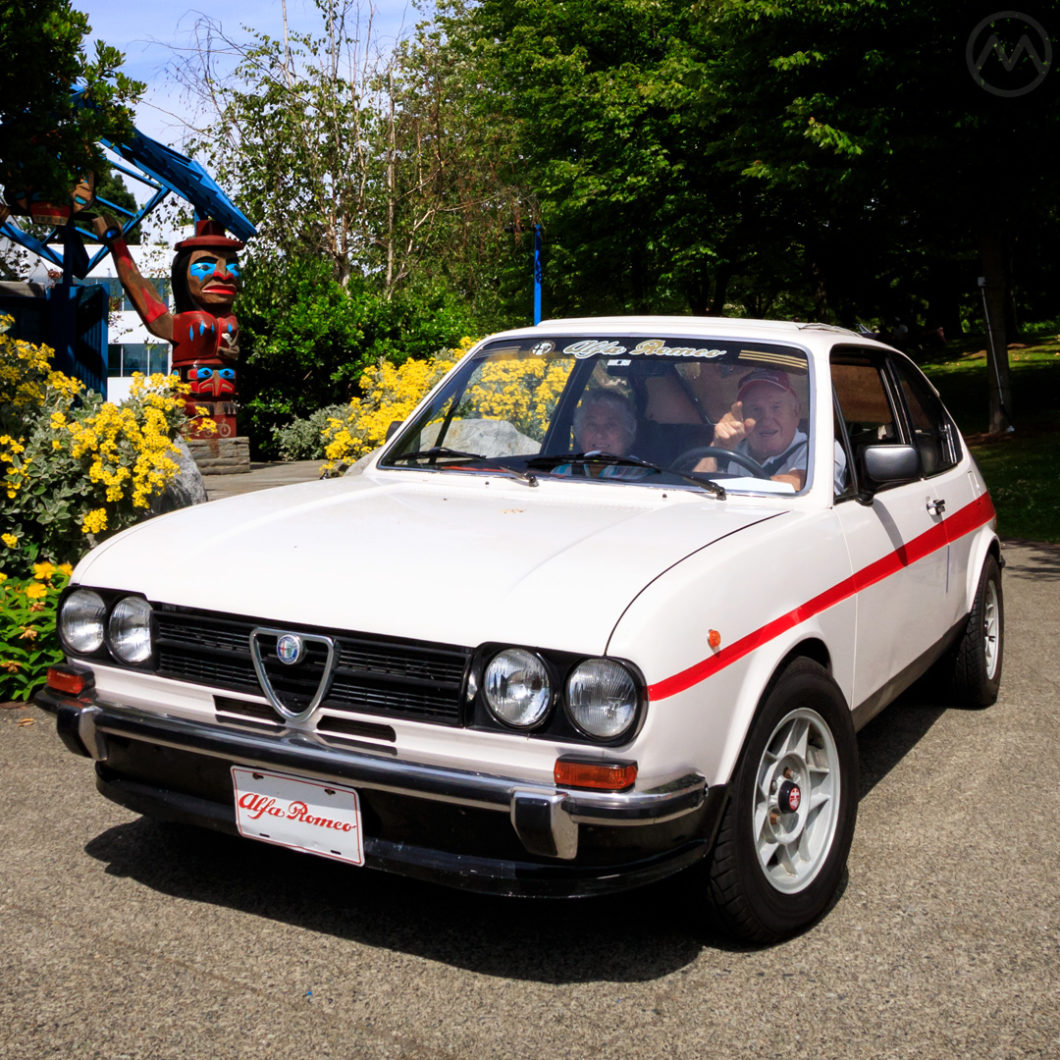If Starsky and Hutch had been from Napoli instead of Bay City, this is how they would have rolled – in a striped, souped up AlfaSud Ti. The front-drive AlfaSud wasn’t quite as tail-happy as a 1975 Torino but it could hang the back end out if you tried, and it was a more exciting car to drive. In Europe in the 1970s, it was also every bit as cool as the Torino was in America.
Alfa Romeo introduced the Ti two years before VW’s Golf GTI. The only reason it’s not remembered as the first and greatest hot-hatch of the 1970s is that it wasn’t a hatch. This despite its obvious hatchback appearance – just one of the many contradictions of the ‘Sud. It was, however, tons of fun to drive.
In a sea of new, small 1970s front-drivers the AlfaSud was king of the mountain in terms of having a good time, and the Ti the fastest version. It’s reputation for thrills was, however, second only to its propensity to rust – which could make even often-crusty 1970s Ford Torinos blush.
The worst ‘Suds dissolved like Alka-Seltzer tablets, a consequence of poor materials, cost-cutting in vital areas, and lax assembly quality. The result was that a brilliant design ended up with a less-than-stellar rep, but over a million were made (counting the AlfaSud Sprint) over the course of 19 years.
The AlfaSud was not sold in North America, so if you’ve never seen one, you’re probably thinking “this little car looks nothing like what I think of as a classic Alfa Romeo.” True. The ‘Sud was an economy car and completely unlike any other previous Alfa, but Milan had been wanting to test the waters on building small cars for almost two decades by the time of the AlfaSud.
When it finally went all-in on a small car, it did so in a big way – but the final plan was a complicated balance of building a new car and satisfying the industrial needs of Italian politicians. Our story begins in the early 1950s, when Alfa Romeo reinvented itself as a maker of mass-market cars.
Rudolf Hruska
The AlfaSud’s creator was Austrian engineer Rudolf Hruska, who before WW2 worked with Magirus trucks and then for Ferdinand Porsche. After the war, he ended up in Northern Italy, briefly selling Porsches with Carlo Abarth before joining Piero Dusio’s Cisitalia in Turin.
After four years of helping with Dusio’s race cars, the talented Hruska joined Finmeccanica, part of the Istituto per la Ricostruzione Industriale (IRI), the state-owned holding company that had absorbed Alfa Romeo in 1933. Finmeccanica was tasked with the actual on-the-ground operations funded by IRI, including Alfa, and Hruska was one of the lead engineers on the Alfa 1900, Alfa’s first volume-production car.
Hruska also had a strong role in redesigning the production process at the Potello factory – his talents extended to productionizing cars as well as designing them.
In his first tenure at Alfa, Hruska helped create the 1900 and 101-series, but there were even smaller cars he worked on that never saw the light of day.
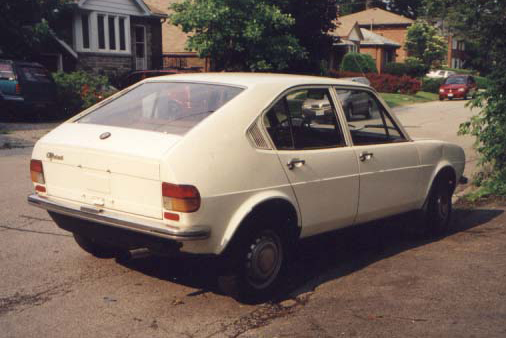
IRI wanted Alfa Romeo to expand, and so did its irascible boss, Francesco Quaroni. One way to do that was to build even smaller, more affordable Alfa Romeos. Engineer Giuseppe Busso (later of V6 fame) came up with a flat twin-powered, front-drive microcar during the development of the 101-series Giulietta, but it went nowhere. In 1957, Hruska and Busso convinced Quaroni and other Alfa managers to take another look.
Whatever they built couldn’t compete directly with Fiat, by way of a gentleman’s agreement that the two companies wouldn’t compete with each other and by back-room political pressure from IRI for Alfa not to mess with Fiat’s huge industrial success. Fiat was Italy’s largest employer and most powerful company – financially and politically.
While Hruska worked on the front-drive “Tipo 103” proposal, IRI made sure Alfa signed a deal to build licensed Renault Dauphines (and later R4s) instead. In return Renault would distribute Alfas in France. It was, er, not what Alfa’s own development team wanted and it triggered political retaliation from Fiat.
After many disagreements with IRI’s leaders, Quaroni and Hruska (and several of Hruska’s staffers) decamped for Simca in 1959, where the engineer helped create the rear-engined Simca 1000.
Hruska eventually moved to Fiat, where he was heavily involved with the 124 and 128 projects.
Quaroni’s mentor and predecessor, Giuseppe Luraghi, had also quit Alfa in protest of bad decisions by IRI. Luraghi, a hugely successful executive at Pirelli before he came to Alfa and a renaissance man (he wrote four novels while working as boss of Alfa Romeo), just didn’t see why the company should make decisions that favored one politician or another, or why it should hold back from real competition in all markets.
After Quaroni and Hruska left, it was obvious that a different approach needed to be taken, and IRI got a new president around that time – Giuseppe Petrilli.
Promising autonomy, Petrilli lured Luraghi back to Alfa in 1960 and for some time left him alone to run things. Thus there was an uneasy truce between the company and its governmental overlord. The Tipo 103 was abandoned in 1963 and the Renault deal not very successful, but the lure of developing a small volume car was too great for Alfa or IRI to ignore, gentleman’s agreement or not.
In mid-1967, Luraghi picked up the phone and hired Hruska back to design a new front-drive small car, one that could really boost Alfa’s output. The car would be built in an all-new factory and Hruska was in charge of making that happen too.
Pomigliano D’arco
To build the car, a new factory would be constructed far away from Milan – in Pomigliano D’Arco, a suburb of Naples, with Mount Vesuvius towering in the background. The name of the car is literally translated “Alfa South” in recognition of the factory.
There were a number of reasons for this choice. One arm of IRI, Cassa per il Mezzogiorno (“Fund for the South”), had spent years financing industrial development in the agricultural south of the country, but many of the projects had gone nowhere – marooned far from the rest of Italy’s industrial centers in the north.
Southern Italian workers had migrated to the North in large numbers to find better work, and once there they agitated for better working conditions and pay, just as they had when they were agricultural workers in the postwar south.
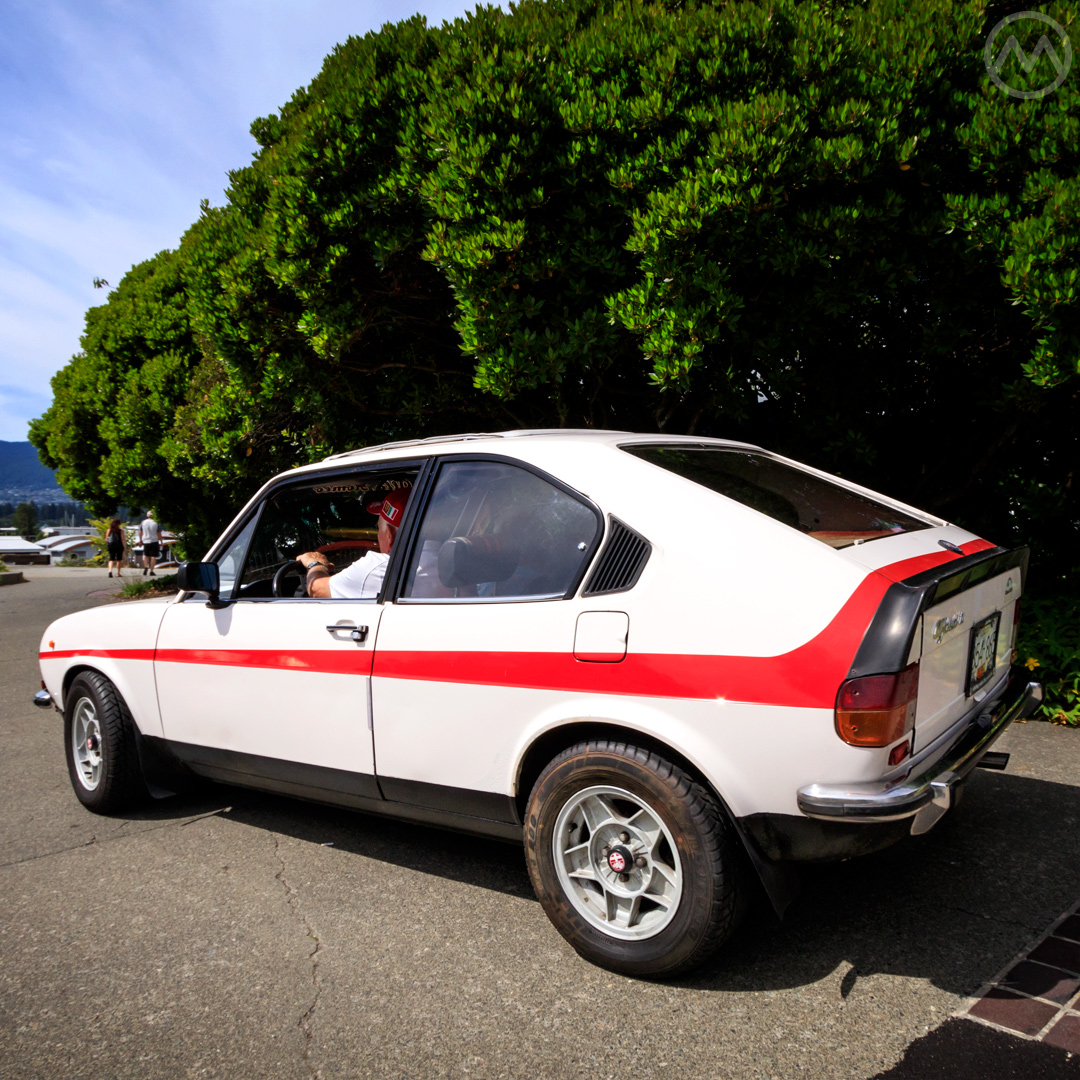
Constructing a factory in the south made sense to Luraghi to some extent – there was an abundant supply of workers there, and the company already had a facility. Pomigliano D’Arco was an old aero-engine factory set up in the 1930s. After the war it had made light trucks, diesel engines, and even built Renault 4s under license, but always on a small scale.
A major new car project could bring thousands of jobs to the region and get financed by Cassa per il Mezzogiorno, dovetailing Alfa’s need to cover costs and IRI’s need to create jobs. “Cassa” and various banks put 300M Lire into the project to entirely rebuild the factory.
For Cassa, it was also a chance to find a local destination for steel made in Taranto, 120 miles to the east, where a huge steel mill had been constructed but only partially used. Although Luraghi is sometimes described as having been pressured into the project by IRI, in fact it was Luraghi’s idea. He had been considering a plant in the south for at least a decade, it just happened that IRI’s goals and his lined up – for the moment.
It was an ambitious idea, and the factory would be state of the art. But just because the workers were in a different place didn’t mean they wouldn’t strike or that their concerns were different from the same workers in the North, only a train ride away. Italy was awash with industrial disputes in the late 1960s and all through the 1970s, and Naples was no exception.
Also, the factory had a small number of old hands but there was no tradition of carmaking at scale in Naples, which meant training up thousands and thousands of workers who had for the most part never been in a big factory before. Construction on the factory began in January, 1968.
Designing the AlfaSud
In the meantime, Hruska set about designing the new car. It was a tough brief – it had to be easy to service and dependable, had to be light, less than 4 meters (157 inches) long, and had to compete in the tough 1.0-1.5L range without costing too much. Oh yeah, and it had to drive like an Alfa Romeo.
The chassis would be partially informed by Hruska’s work on the Fiat 128 project, light and tight, with MacPherson struts up front but a beam axle and Watt’s linkage out back. Inside, it was meant to maximize space in the same way the Mini had – keep mechanical components from intruding.
It was made much more rigid than other small cars of the day by putting in chunky box sections in the front and back, just out of reach of passengers. For its rigidity, it was still light – just under 1,900 lbs.
For good aerodynamics and a low center of gravity, the car would use a flat four, which was designed by Carlo Bossaglia, mated to a four speed. The engine sat ahead of the front axle, longitudinally, like a Renault, but much lower. Inboard front disc brakes kept the weight towards the center of the car and reduced unsprung weight. The back wheels got discs too.
Bossaglia’s engine was, when conceived in 1968, a far more advanced powerplant than anything else in a European small car – a twin-cam flat four with two timing belts and lots of power for just 1,186-cc, the engine’s original configuration. It had a lot of room to grow, and would eventually reach 1,712-cc, and it loved to rev.
Although it had no relationship to any of Alfa’s existing engines, it was distinctly Alfa-Like. Its compact size also meant that the passenger compartment of the ‘Sud was quite large for the overall size of the car.
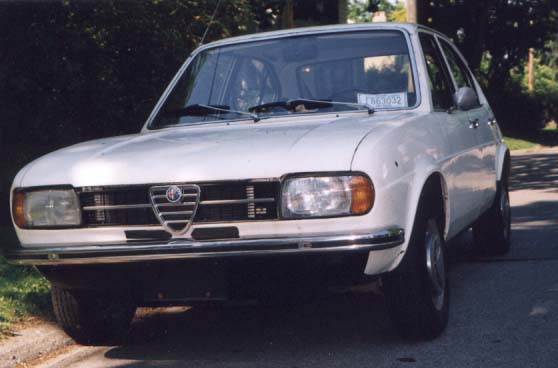
The body engineering was done by Aldo Mantovani at a new company, Studi Italiani Realizzazione Prototipi S.p.A., soon to become ItalDesign. Mantovani’s partner in the company was, of course, Giorgetto Giugiaro, and the AlfaSud was ItalDesign’s first major commission as an independent company.
Hruska and Giugiaro had worked closely together during Hruska’s time at Fiat, when they’d collaborated on the Fiat 850 Spider.
The styling was clean and simple, a two box fastback, though no hatchback was planned at the time the lines were being set down (in mid 1968). Mechanical prototypes were already in the works by then.
Full of advanced engineering, it was also full of corners cut to keep the price down. The trunk hinges were external, and there was nothing to keep the lid from smashing into the rear window if you opened it too enthusiastically, at least at first. Interior materials were cheap, ergonomics poor, and the heater terrible, but to drive it was a delight to drive.
Interestingly, Giugiaro actually asked Hruska to put the trunk hinges inside and make the car a little longer, but Hruska resisted.
The factory gradually took shape in 1969 and 1970 as the final details of the car were ironed out, and the car broke cover at the 1971 Turin show. Production would have started soon thereafter, but the workers went on strike before the factory even opened, and cars didn’t start arriving to dealers until the spring of 1972 and even longer for export markets.
Built on a Friday
Reviewers liked the AlfaSud from the moment it arrived. Though it could feel a little cheap for what it was (it could cost about 20-40% more than an equivalent Fiat 128), it was a joy to drive and Hruska’s engineering was rock solid. It was fun to drive hard and encouraged you to rev and push.
It was hard to get at first, as strikes and disorganization at the factory meant just 70 cars a day were being built. The original plan called for 1,000. That also meant the factory couldn’t staff up as fast as it wanted to – original 15,000 workers were planned but just 5,000 were working there in 1972, which made locals resentful.
Worst of all though was the metal problem. Contrary to popular belief, the metal did not come from the USSR. Italy had a large steel industry, second only to West Germany in Europe in the 1970s, and the metal used in the AlfaSud was home-grown. But labor problems in the steel industry and lax quality standards meant the metal in the AlfaSud was poor from the start. Little rustproofing was done at the factory, and it wasn’t long before it started to show.
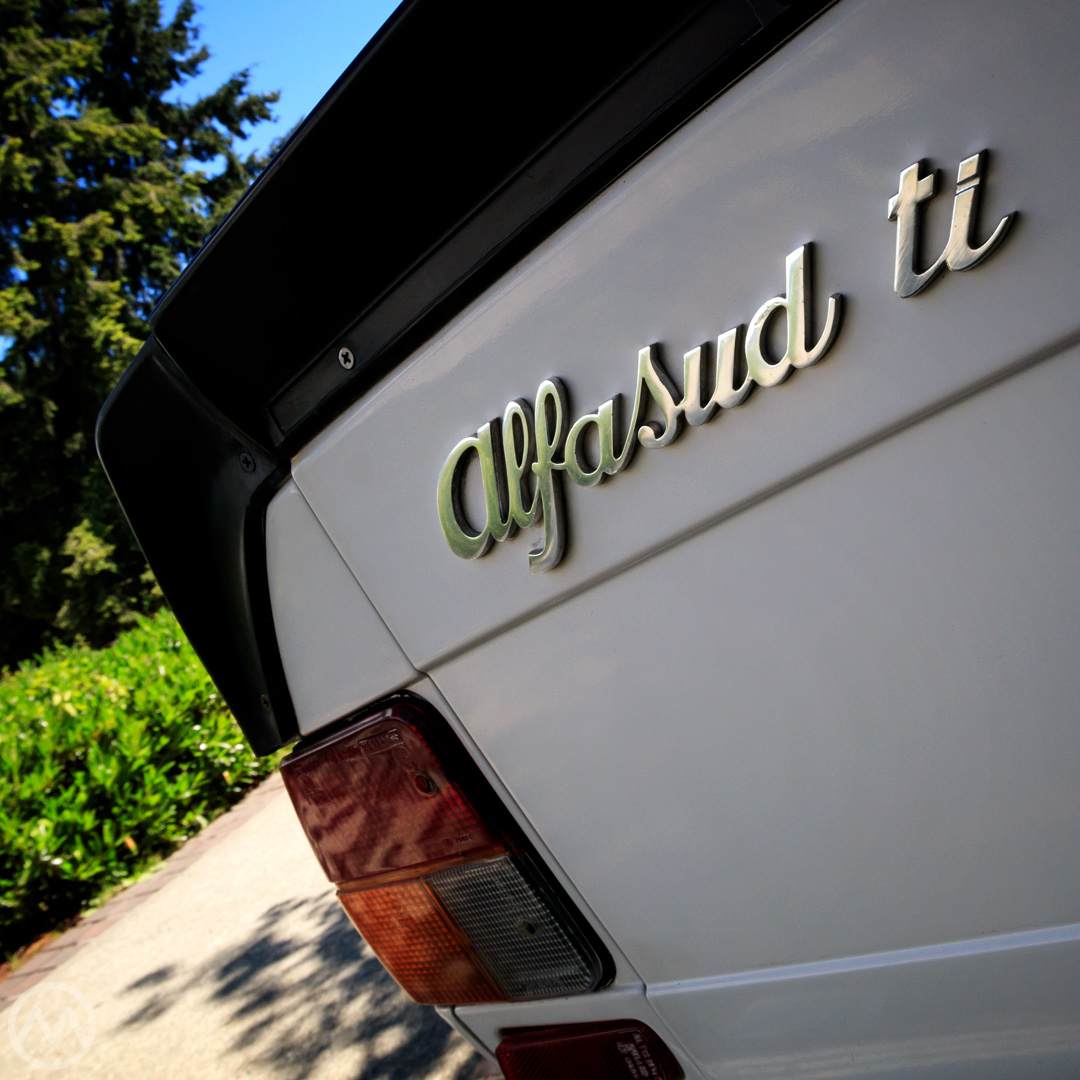
Many cars to this day come with corrosion warranties, a legacy of the 1970s, but the ‘Sud was particularly badly afflicted. In humid or wintry climes, the Alfa might rust out in only three or four years. Soon the factory tried spraying insulating foam into hard to reach places – only to have it trap moisture and make the problem worse.
The factory did finally get up to speed in 1973 and in 1974 the Sud had its best year ever – more than 100,000 were made, helped by the addition of a 2-door model – but it was around this time that the awful truth about the car’s materials started to come out.
Nor was quality overall particularly good – just like at Fiat’s plants in the north, work stoppages and wildcat strikes were common in the 1970s. Unlike Turin, labor strife rarely devolved into violence in the 1970s, but times were hard all over Italy as the country sank into a deep recession.
Pomigliano D’Arco had a slightly different problem. Being surrounded by farmland, absenteeism during harvest season was rampant, which made the regular flow of cars and regular staffing on the production line difficult. Production rarely got above 500 cars a day. Hruska, at wits end, left in 1974 to go run his own design consultancy. In 1980, he joined the I.DE.A Institute in Turin and continued to design cars.
Luraghi, meanwhile, found the whole affair much more difficult than anticipated. Worse yet, it created an expectation of building a factory somewhere else that might be handed out as a political plum.
Giuseppe Petrilli had “encouraged” Luraghi on Pomigliano D’Arco but more or less allowed him to run the show. In mid-1973 Petrilli pressured Luraghi to invest in another new factory about 20 miles away in Avellino.
Petrilli’s stated goal was to move about 70,000 cars a year to this new facility, which just happened to be in the district of a powerful member of the Christian Democratic party – Minister of Industry Ciriaco De Mita. With things difficult already at the existing factory, such a demand was preposterous, and a plain attempt to curry political favor with De Mita at potentially great expense to Alfa Romeo.
Luraghi flatly refused, and when repeatedly pressured, he resigned from Alfa Romeo altogether, depriving the company of years of institutional knowledge and guidance. Such was the state of Italian politics.
AlfaSud Ti
Even with all these problems, the fundamental goodness of the ‘Sud’s design shone through. No other small car drove as well – not the Fiat 128, not the Honda Civic, not the Austin Allegro, not even the VW Golf – though this last entry was a tough competitor with Giugiaro-penned lines of its own and a much more functional hatchback body.
The only thing better than the regular AlfaSud was the Ti (for Turismo Internazionale), introduced in late 1973. To the regular package was added a bigger Weber carburetor, higher compression, a five-speed (the Sud was never offered with an automatic), four halogen headlights and a spoiler.
At first, it was only modestly faster than the regular Sud, but after the launch of the AlfaSud Sprint – a dedicated sport coupe with new styling again by Giugiaro – the Ti was treated to the Sprint’s 1,286-cc engine in the summer of 1977. The Ti was about 200 lbs. lighter, which made it the fastest of the small Alfas, though its strength was still handling rather than out right speed.
In its cohort of cheap sporty small cars, only the Fiat 128 3P and VW GTI were real rivals, and a year later the Ti got an even bigger bored-and-stroked 1,490-cc version of the engine and black fender flares – it looked the part of a proper hot hatch even if it still had only a trunk.
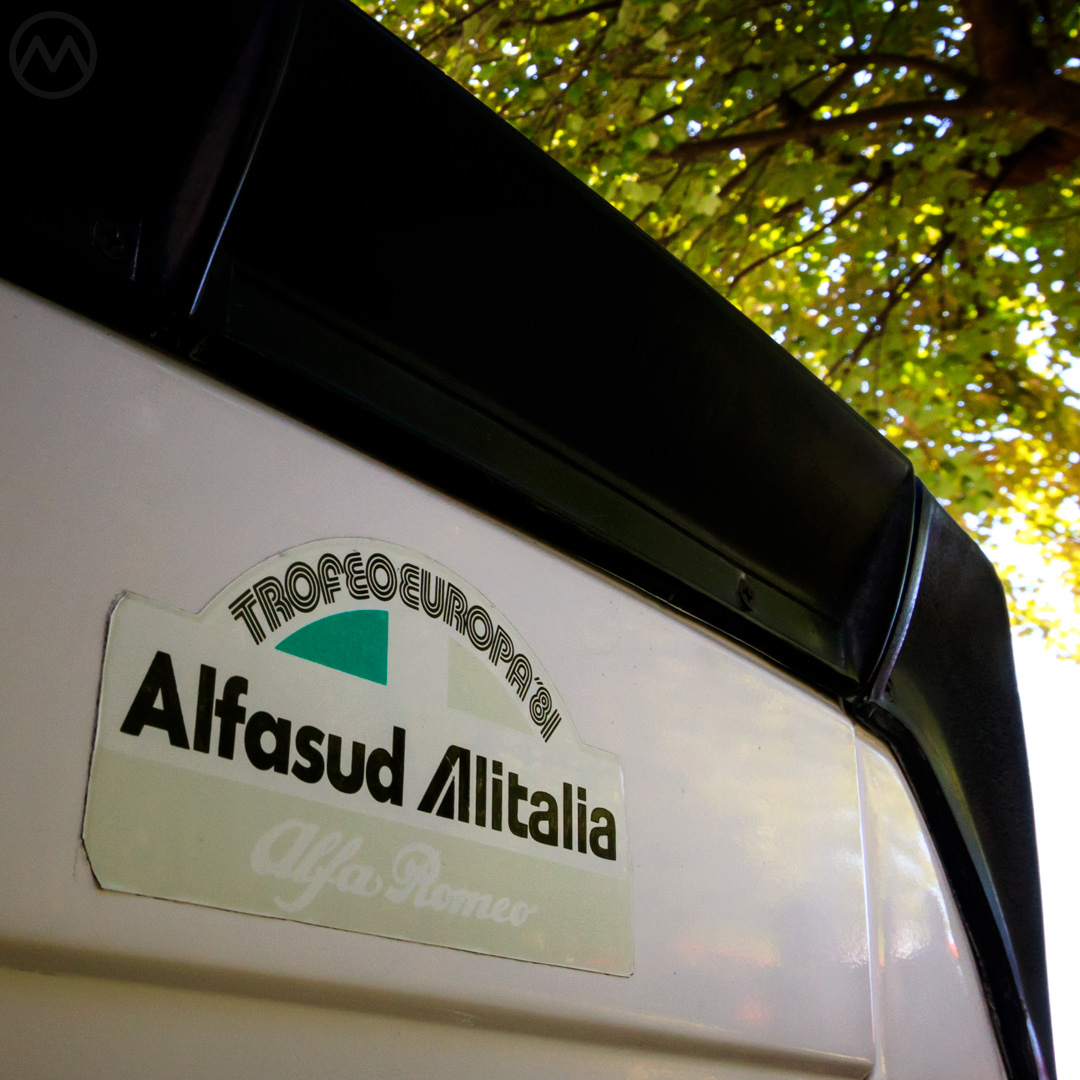
By then, rust-proofing had greatly improved although the ‘Sud was stuck with a reputation for rot that it would never leave behind. Also, in fairness, “improved” did not mean the situation was fixed – all AlfaSuds even into the 1980s tended to rust, just not as badly as the early ones. Nor did worker unrest stop – more than 700 strikes were held during the main years of Sud production (1972-1983), but it was “better.”
The burgeoning market for small and practical sporty cars in Europe came in part at the expense of sports cars and coupes. Volkswagen’s GTI, Renault’s Alpine 5, and the AlfaSud Ti were on the vanguard of the phenomenon. They offered a family-car like interior and great fuel economy with performance not so different from a real sports car.
The Sud was well known for being able to take more power than anything the factory provided and was frequently souped up.
In the summer of 1977 at least one U.K. builder was willing to punch up a used 1.2-liter Ti to 1.6 liters with bigger pistons and custom made cranks. A proliferation of aftermarket turbo Suds also sprouted around 1978-79 and many Turbo kits were offered well into the 1980s. Front-drive or no, the car’s light weight and perfect balance made it easy to hang the tail out if you tried.
There was a also popular one-make race series, the AlfaSud European Cup, where from 1979 to 1981, you might have spied a young Gerhard Berger, 1981’s German champ among AlfaSud drivers.
Escape Hatch
By 1981, the AlfaSud was ten years old but still dynamically one of the best small cars around. What it lacked, however, was the hatch it had always cried out for.
The rear box section behind the seats made adding it difficult, but in 1981 the 2-door AlfaSud finally got its hatchback, as well as revised styling with plastic bumpers. Some months later the 4-door Sud got the same treatment, which helped it keep pace with newer entries.
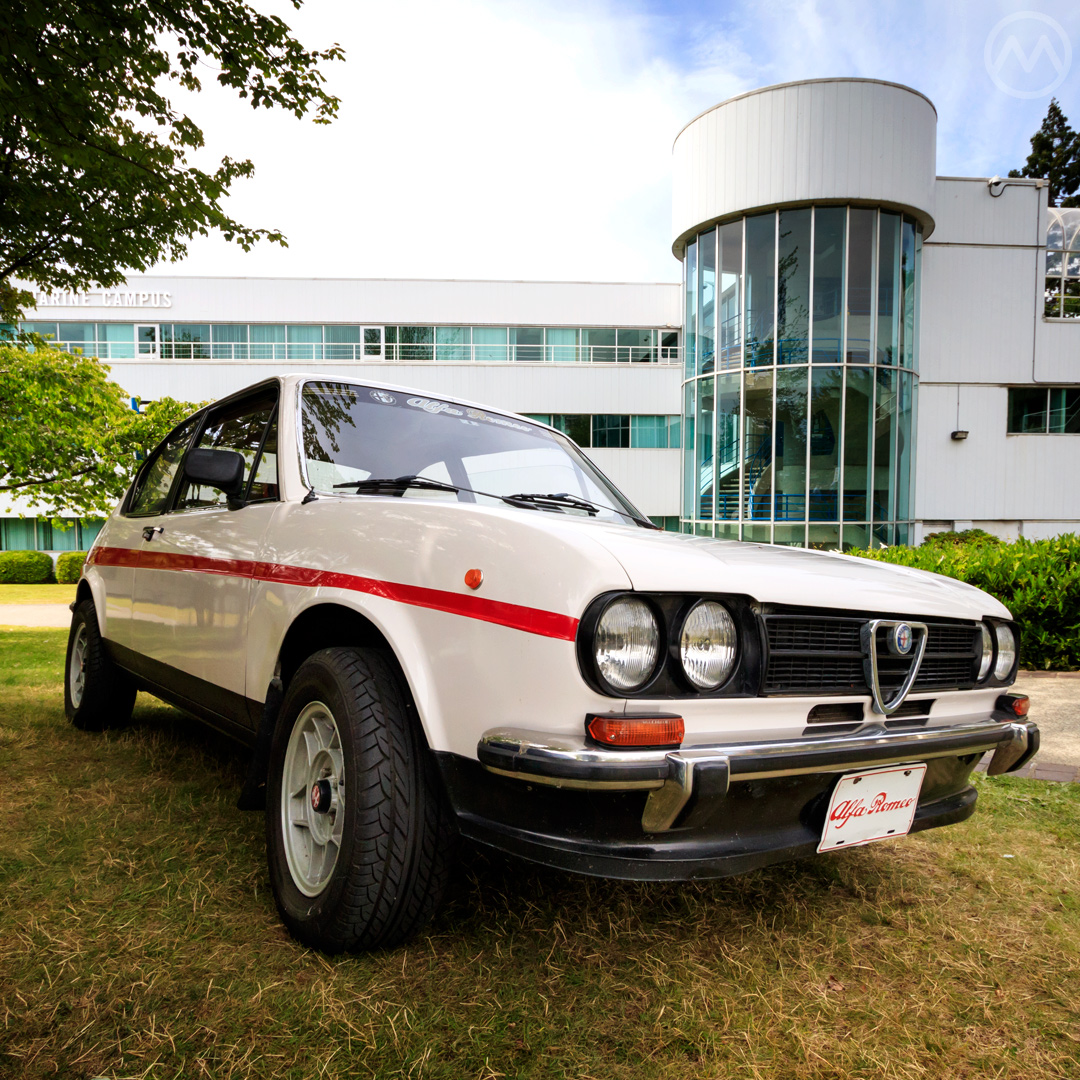
By then the Sud’s replacement, the wedge-shaped 33 with lines by Ermanno Cressoni, was just about ready, and it would be introduced in 1983. A second replacement involved a tie-up with Nissan Europe, in which Pomigliano D’Arco would assemble Nissan Cherry bodies with AlfaSud mechanical pieces, a car called the ARNA – which had neither the style and finesse of the Sud nor the reliability of the Cherry.
The last regular AlfaSuds were built in the fall of 1983, though the Sprint coupe continued on into 1989, helped by the fact that the 33 shared many mechanical parts.
The AlfaSud was never sent to North America, though it was briefly built in South Africa and Malaysia. Alfa Romeo’s U.S. arm felt there wasn’t any market for a small, cheap, Alfa economy car in the USA and they were probably correct – Alfa was always a niche high-end brand to Americans and even in Europe the “cheap” Alfa took some getting used to.
The factory at Pomigiano D’Arco eventually got itself sorted out, and is still making cars to this day – currently the Fiat Panda.
Beloved of boy racers and hot hatch types, AlfaSud Tis that didn’t rust out were often thrashed hard, which makes them rare today. The lovely examples seen here are two of a small number of cars privately imported into Canada and the USA over the years – probably fewer than 20 cars in total.
Do you have an AlfaSud? We’d love to see it. Drop us a line at contactoldmotors@gmail.com.

